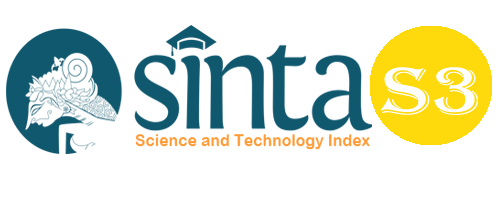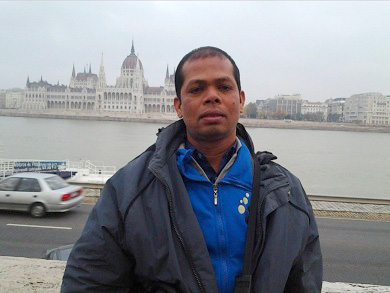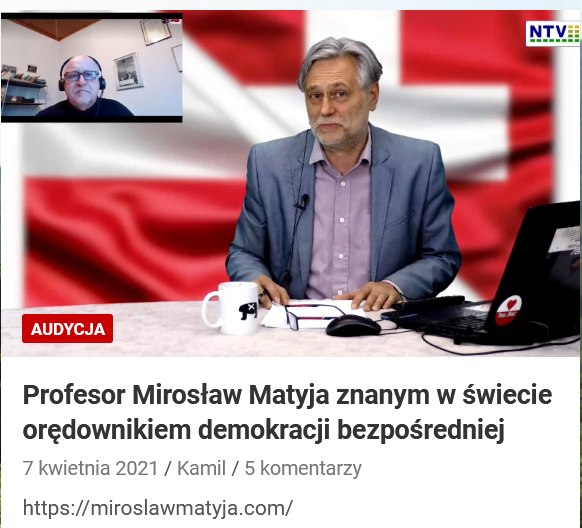Tastafi Communication Strategy in the Development of Madani Community
Abstract
Keywords
Full Text:
PDFReferences
Abdullah bin Muhammad, Tafsir Ibnu Kasir, Juz-IV, Bandung: Sinar Baru Algensindo, 2003.
Ahmad Warson al-Munawwir, Kamus al-Munawwir,Surabaya: Pustaka Progressif, 1997.
AliNurdin,Qur’anicSociety:MenelusuriKonsepMasyarakatIdealdalamAlqur’anJakarta:Erlangga,2006.
Alo Liliweri, Komunikasi Serba Ada Serba Makna, Jakarta: Kencana, 2011.
Al-Sayyid Ahmad al-Hashimī, Jawāhir al-Balāgah fī al-Ma’ānī wa al-Bayān wa al-Badī’ī, Mesir: Dāral-Fikr,1991.
Anwar Arifin, Strategi Komunikasi, Jakarta: Rineka Cipta, 1984.
Anwar Kuta Krueng, Dayah dan Rabithah Thaliban dalam Catatan Aceh, Banda Aceh: Rabithah Thaliban Aceh, 2010.
Departemen Agama Republik Indonesia, Alquran dan Terjemahnya,Bandung: Diponegoro, 2008.
Departemen Pendidikan Nasional, Kamus Besar Bahasa Indonesia Jakarta: Balai Pustaka, 2007.
Dilla Sumadi, Komunikasi Pembangunan Pendekatan Terpadu, Bandung: Simbiosa Rekatama Media, 2007.
F. Rachmad, Public Relations dalam Teori dan Praktek, Jakarta:. Gramedia Pustaka Utama, 1993.
Hafi Anshari, Pemahaman dan Pengalaman Dakwah: Pedoman Untuk Mujahid DakwahSurabaya: Al-Ikhlas, 1993.
Hafied Canggara, Perencanaan dan Strategi Komunikasi, Ed. I, Cet. I, Jakarta: Rajawali Pers, 2013.
Hasbi Amiruddin, Menatap Masa Depan Dayah di Aceh, Yogyakarta: Polydoor, 2009.
Jalaludin Abdurahman Ibn Abi Bakr Al-Suyuti, Al-Jami’ al-Shagir fi Ahadits al-Basyir al-Nadzir, Juz II, Beirut: Dar al-Fikr, t.th.
John Farlong dan Frisha Maynard, Monitoring Student Teachers London: Ruutledge, t.th..
Keith Butterick, Pengantar Public Relations, Jakarta: Raja Grafindo Persada, 2011.
Luwis Ma’lūf, al-Munjid fī al-Lugah wa al-‘A’lām, Bairūt: Dār al- Mashriq, 1977.
M. Quraish Shihab, Wawasan al-Qur’an: Tafsir Mandhu’i atas Pelbagai Persoalan Umat, Bandung: Mizan, 1998.
Matondang,Kepemimpinan Budaya Organisasi dan Manajemen Strategi, Yogyakarta: Graha Ilmu, 2008.
Muhammad Nashiruddin Al-Bani, Ringkasan Shahih Bukhari, Juz-IV, Penerbit: Pustaka As-Sunnah, 2005.
Nurudin, Pengantar Komunikasi Massa, Ed. I Cet. II; Jakarta: PT. Raja Grafindo Persada, 2007.
Onong Uchjana Effendi, Ilmu Komunikasi Teori dan Praktek, Bandung: Remaja Rosdakarya, First Edition, 1999.
Onong Uchjana Effendy, Dinamika Komunikasi, Bandung: Remaja Rosdakarya, 2002.
Pawit M. Yusup, Ilmu Informasi, Komunikasi, dan Kepustakaan, Ed. I, Cet. I; Jakarta: Bumi Aksara, 2009.
Pekan Kebudajaan Atjeh II, Prospek Sosial Budaya, Langsa: Panitia Pekan Kebudajaan Aceh, 1972.
Rūhī al-Ba’albakī, al-Maurid Qāmūs ‘Arabī-inkalījī, Modern Arabic-English Dictionary, Bairūt: Dār al-‘Ilm lī al-Malayīn, 1995.
S.J.Taylor dan R.Bogdan, Introduction to Qualitative Research Methods, New York: Willey, 1984.
Sharan. B. Merriam, Case Study Research in Education: A Qualitatif Approach,San Fransisco: Jossy-Bass Publishers, 1988.
Sugiyono, Metode Penelitian Kualitatif, Bandung: Alfabeta, 2005.
Syaikh Salim bin ’Ied Al-Hilali, Syarah Riyadhush Shalihin, Jakarta: Pustaka Imam Syafi’i, 2005.
Taufik Abdullah (et. All), Agama dan Perubahan Sosial, cet. 1, Jakarta: Raja Grafindo Persada, 1996.
Werner J. Severin dan James W. Tankard, Jr., Teori Komunikasi: Sejarah, Metode, dan Terapan di Dalam Media Massa, Ed. 5, Cet. 4; Jakarta: Kencana, 2009.
DOI: https://doi.org/10.33258/birci.v2i2.260
Article Metrics
Abstract view : 312 timesPDF - 248 times
Refbacks
- There are currently no refbacks.

This work is licensed under a Creative Commons Attribution-ShareAlike 4.0 International License.

This work is licensed under a Creative Commons Attribution-ShareAlike 4.0 International License.

_.gif)

















_.gif)



